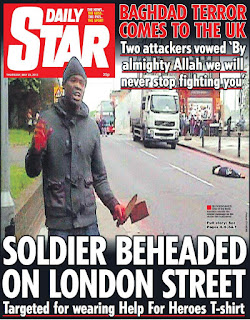The Sun's Graham Dudman: If you apply for a job here and you don't have shorthand your CV is going in the bin.
With everything that is changing in the media, it is reassuring to know that shorthand is still regarded as an essential tool for journalists. This is not some whim of old-fashioned editors but the recognition that there are many jobs reporters simply can't do without it. The NCTJ has put together this video which has many big-hitters from the industry putting the case for shorthand. I particularly like the quote from The Sun's Graham Dudman who says if you don't have shorthand 'it's like playing football without football boots. It's not going to happen.' He also says that if you don't have your shorthand you are 'a potential liability to your paper and we don't want you in the newsroom'.
A couple of years ago I posted the article below, which makes the case for shorthand. The NCTJ video reminded me that it is just as valid today, so worth dusting down:
Two interesting snippets are doing the rounds this week that show shorthand is still thriving at journalism training centres. First there is this quite brilliant short video Why I love Teeline posted by Julie Starr on the Evolving Newsroom and brought to my attention by@danbloom1. Then there is the story of Anneka Masih, a journalism student at Staffordshire University, who has shown her devotion to her craft by having her name tattooed on her leg ... in Teeline.
Shorthand, or more specifically Teeline, has played a big part in my life. First there were my experiences, as a trainee, in Mrs Mawston's sitting room in Whitley Bay every Wednesday afternoon.
Then, when I ran courses in Hastings, gaining 100 words per minute was essential. Some trainees were told by their editors 'don't come back unless you get it.' You can imagine the pressure. The brilliant Sylvia Bennett delivered 75-minute sessions first thing every morning followed by another hour from midday to 1pm. She had a great success rate. She still does, running the shorthand on PA Training foundation course in London as does her counterpart Susan Nixon in Newcastle. It was shorthand that dominated the last days of the course as the pressure mounted. It was shorthand that caused tears and distress. No matter how good you were at bringing in stories or penning a readable feature, if you failed shorthand your editor would be unhappy. One editor asked me to pass on this message and we put it up on the noticeboard: "If you don't have shorthand you are a liability in my newsroom. I can't send you to court or council and, in a small team, you will need to slope off for extra lessons when you should be out gathering stories. My message is simple. Get your shorthand at Hastings or don't come back."
It always struck me that some good people were lost to journalism because of this. It is also unfair. National newspapers are littered with big name writers who have never been near a Pitman or Teeline class. Nevertheless, the industry insists shorthand is still an essential requirement. I interview trainees for the Daily Mail and you are unlikely to get over the first hurdle if you don't have shorthand (and a driving licence). At a student conference last year Graham Dudman, managing editor of The Sun, told delegates: “Number one is shorthand. I want to know that you can write shorthand at 100wpm.” Apart from being a required tool having shorthand also adds to your professionalism. I recall the judge who, having studied a reporter's shorthand note, advised the jury that this was not a hack but a professional man. Then there was the case of England Football manager Glenn Hoddle being interviewed by Matt Dickinson of The Times. Hoddle told Dickinson that he believed disabled people and others were being punished for their sins in a former life. In the argument that followed Dickinson's professional shorthand note was critical ... both to his reputation and Hoddle's future.
I know we can use tapes - but not always. Here's Kim Fletcher, chairman of the NCTJ, on the Today programme: “If you have a shorthand note you can find the quote very quickly. You go in with a tape recorder, or a digital recorder, and if you’ve spent an hour in there with your recorder you’ve got an hour of tape to go through, that takes quite a long time.” Journalism is changing rapidly of course and in a world of social media, video, forums, blogs, and the like - not everyone will need to write at 100wpm.
For now though, if you are studying journalism you should learn to drive, build up a stunning portfolio, pass your law exam and GET YOUR SHORTHAND.

















































